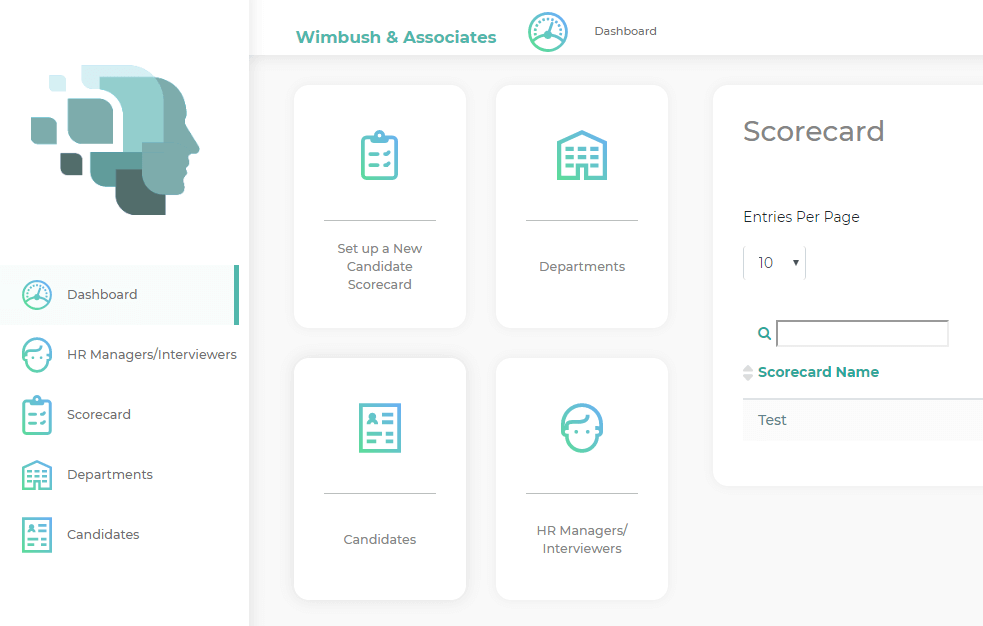Talent acquisition is not a new thing. Competitive businesses have been practicing talent acquisition strategies for years. The core of talent acquisition is the ongoing strategy to find, select, and retain future executives, leaders, and experts. While the terms are often interchangeable, talent acquisition and HR recruiting are not the same things. Today, we will discuss talent acquisition strategies that prove successful. We will also answer some of the most pressing questions regarding strategy development, key aspects of successful talent acquisition strategies, and more!
What is Talent Acquisition?

Talent acquisition is a process more than anything else. In this ongoing business development plan, companies seek to identify, attract, select, and keep highly qualified individuals for key positions requiring particular skill sets. As we said, the practice is not new, but it gained a lot of focus recently. You can see its effects and results with your own eyes. Companies that recruit candidates to fill vacancies face higher employee turnover rates, higher recruiting costs, hiring mistakes, low-performance levels, etc.
On the other hand, companies that are successful in their talent acquisition strategies also reap incredible benefits. According to a study conducted by the Aberdeen Group, performing in talent acquisition translates into:
- A 94% employee retention increase in the first year of work;
- About 80% of employees receiving “exceeds performance” ratings from managers and executives;
- Yearly improvements (up to 15%) in hiring managers’ satisfaction.
This data is from 2013, but recent findings confirm that the top players in their fields use talent acquisition strategies with outstanding results. Before we move on to our next chapter – namely, talent acquisition strategies’ benefits, let’s understand how talent acquisition differs from recruiting.
Talent Acquisition vs. Traditional HR Recruiting
Talent acquisition is a long-term business strategy focused on finding experts and convincing them to bring their unique skills and use them to a company’s benefit.
The business in question then focuses on the employee’s journey, ensuring that the acquired talent grows progressively within the company’s structure.
Within the talent acquisition framework, the focus shifts from candidates looking for jobs to companies actively looking for experts across a wide variety of fields. The secret of successful talent acquisition strategies is attracting, retaining, and engaging talent regardless of open job positions and vacancies.
On the other side of the coin, traditional recruiting is less proactive and more reactive. Businesses ignite the recruiting process when they want to cover current skill gaps or fill in a fast and cheap job vacancy.
For this reason, companies interested solely in recruiting are also the most vulnerable to employee turnover and financial loss.
What is A Talent Acquisition Strategy?
In short, a talent acquisition strategy is a long-term plan aiming to:
- monitor the talent existing on the market (even if those experts are not actively looking for a new job);
- attract specialists with specific skills;
- incentivize the specialists to stay and engage with the company for extended periods;
- develop leadership skills in its employees;
- and ultimately contribute to the company’s long-term success.
As you can see, a recruiting strategy is quite different from a talent-gaining one. Hiring for talent is (or should be) part of any company’s business plan. So let’s get to our next chapter, shall we?
What Are the Key Aspects of a Successful Talent Acquisition Strategy?
The theory and practice of talent acquisition strategies find their roots in Benjamin Schneider’s attraction-selection-attrition (ASA) model.
It delineates a framework for understanding organizational behavior that integrates both individual (micro) and organizational (macro) perspectives by explaining macro organizational attributes with micro person characteristics. The framework proposes that the outcome of three interrelated dynamic processes, attraction-selection-attrition, determines the kinds of people in an organization, which consequently defines an organization, its structures, its processes, and, ultimately, its culture.
When it comes to the practical implications of the ASA model in companies’ talent acquisition strategies, we need to discuss the three forces that shape these stratagems.
1. Talent Attraction
As we said, in this framework, companies are the ones that make sustained efforts to “sell themselves” to talented candidates instead of the other way around. Businesses try to stand out by building attractive employer brands and meeting candidates with unique value propositions.
2. Talent Selection
This process is lengthy, and all recruiters know how crucial it is. During the selection stage, HR recruiters and companies assume the responsibility of going through candidates’ applications and performing comprehensive pre-employment assessments to ensure that individuals are perfect for the company. In a traditional recruitment process, HR experts assess candidates for vacant jobs. In talent acquisition strategies, such assessments focus on finding matches between persons and jobs and persons and organizations.
3. Talent Attrition
The third component of a talent acquisition strategy, according to Schneider, is attrition. It goes beyond employee retention strategies. Attrition refers to organizations’ focus on retaining only those candidates who show high levels of harmony with that company’s core values, makeup, characteristics, and so on. Once the company identified, selected, and acquired congruent candidates, then it implements its retention strategies.
As a short conclusion, talent acquisition strategies include employer branding, strategic recruitment processes, recruiting optimization, and more.
Do you wonder about the differences between an HR recruiter and a talent acquisition manager? Both play the same roles up to a point. However, the talent acquisition specialist/manager has a strategic role in an organization, whereas a recruiter plays an operational part.
Top Five Talent Acquisition Strategies to Implement for Business Success

Let’s discuss in short some of the best talent acquisition strategies executives and HR consulting firms should apply to ensure business success.
1. Have a Clear View of Your Business Goals
While filling in vacant positions is crucial for implementing a company’s business plan, talent acquisition should find its foundation in your company’s long-term goals. Talent acquisition strategies focus on what the organization wants to achieve in the next three years and then find experts who can help attain those expansion outcomes.
For instance, an organization wants to deliver a new product in two years. The talent acquisition managers start scouting the market for specialists whose skills can help the company create that product successfully and efficiently.
One of the biggest problems many organizations have today is the lack of a clear business goal and future perspectives. Some jobs might not even exist yet. However, successful entrepreneurs have a very good idea of what talent they need in the future to check their long-term business plans.
2. Build a Strong Employer Brand
How do current and future employees see your company? Would they want to work for you now or in the next two years? What can you offer them that they cannot find with your competitors?
According to statistics, employer branding is one of the key factors contributing to identifying, attracting, and retaining talented employees.
Employer branding encompasses the company’s mission, vision, values, organizational culture, onboarding strategies, employee compensation and rewarding strategies, employee growth programs, and more.
Take a step back and perform a critical assessment of your company’s position on the market, especially in the pandemic context. Do you need to adjust your talent acquisition strategies to the emerging workforce needs and the current economic landscape? Is your brand as an employer as strong as it was two years ago?
3. Embrace Technology in All the Stages of the Talent Acquisition Process
Automation has had an enormous impact on all stages of business development in the past years. As professional HR experts and company executives, it would be a shame to neglect it in your talent acquisition process.
Today, you have a wealth of tools and instruments to use to identify, attract, and retain top professionals in their fields. Let’s see some examples!
- Applicant Tracking Systems – Such tools allow companies to push job ads across multiple boards, encourage organizational collaboration at all levels, and collect candidate resumes for different talent acquisition programs.
- Reference Hunting Tools – These are automated instruments collecting candidate references from past managers and employers, also delivering the results in a neat package.
- Pre-employment Assessment Tools – We have talked about them in the past and continue to do so. From job-specific skills testing instruments to complex personality inventories, cognitive & aptitude tests, or behavioral assessments, these batteries and inventories offer companies standardized, measurable, and actionable insight on the talents they want to acquire.
- Candidate Scorecards – Successful organizations and HR experts understood that they needed standardized, measurable results even from interviews a long time ago. Candidate scorecards allow recruiting professionals and talent acquisition managers to create structured interview scorecards to compare candidates’ answers.
Such tools are useful in certain talent acquisition stages, while others will prove their validity later on in the process. We discussed plenty of pre-selection tools, but don’t forget you should always use other recruitment metrics when it comes to hiring decisions, making an offer, assessing recruitment funnel efficiency, and more.
4. Use Employee Referrals
Remember that talent acquisition is not the same as finding someone for an open position because people just left the company. Referrals are still some of the best sources for hire in our current times. Hunting for talent means establishing solid and rewarding referral systems to encourage existing employees to recommend experts they know. Contacts and networks external to a company are treasure troves for identifying specialists who fit organizational values and business principles.
5. Scout Different Markets and Walk Out of Your Comfort Zone
A traditional recruiting process follows more or less the same steps:
- A position opens in a company;
- HR specialists define the job description and the candidate profile;
- The company pushes the job ads across recruiting boards and collects resumes;
- The company’s HR department or a recruiting service starts assessing the candidates and assists with the hiring process.
In a talent acquisition strategy that involves market/competition scouting and outreaching to different areas, the company participates in a broad range of activities, events, meetings, etc., to identify the talent they can engage when the time comes.
To make things clear, we will give you the famous Deloitte strategy of hiring top programmers. Instead of posting job ads and waiting for candidates to apply, Deloitte recruiters started attending all the hot places likely crawling with talented coders: hackathons, code fests, IT and tech conventions, product showcases, innovation conferences, etc. The same strategy of reaching out in other places than you’re used to is visible when big companies start recruiting universities’ talent.
A software company monitoring law students? A web design company searching for talent in a psychology workshop? Digital marketing recruiters attending financial workshops to find economy experts? Yes.
Reaching outside your industry is one of the powerful talent acquisition strategies to date. Instead of waiting for candidates, companies go looking for them. Sometimes, based on the soft skills they are hiring for, companies offer different working opportunities that do not match the candidate’s current job description.
Talent acquisition means, more than anything else, having a vision of the future and identifying the key players in any possible field that can help the prophecy happen.
Talent Acquisition Strategies’ Benefits

After reading this guide, we are sure you have a clear idea of why talent acquisition is the path to success for any company. However, let’s summarize the benefits brought by a solid talent acquisition strategy:
- It reduces hiring costs and financial risks. It is more efficient and cheaper to hire the right person for an existing or a future job than making hiring mistakes and starting the recruiting process all over again;
- Such a strategy cuts the time spent on hiring the right candidates. Initiating a recruiting process and finalizing it with a good hire takes more time than having an ongoing talent acquisition strategy that delivers an immediate response;
- A talent acquisition strategy increases overall hiring quality and business success. It provides a framework where the business vision, recruiting methods & assessment tools, and candidates’ profiles fit in together in a perfect puzzle.
Bottom Line
Developing a talent acquisition strategies framework is not an easy feat. Whether you recruit for a company or represent an HR consulting service, your responsibility goes beyond posting job ads and interviewing candidates. Has the organization you work for implemented talent acquisition strategies? What can you tell us about them from your experience? What other strategies do you recommend for hiring and retaining talent?


